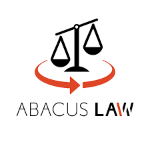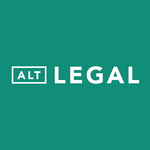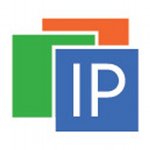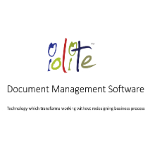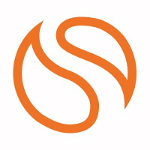List of Best Docketing Software
Showing 10 of 13 productsAbacusLaw, a leading legal practice management software designed to streamline and simplify the complex processes of running a law firm. With advanced features interface, AbacusLaw is a solution for managing cases, clients, documents, and billing eff...Read AbacusLaw Reviews
Alt Legal, the game-changing legal software that streamlines your workflow and simplifies the complex world of intellectual property law. With its user-friendly interface and innovative features, Alt Legal is a solution for managing your legal matter...Read Alt Legal Reviews
ANAQUA is a software designed to help businesses effectively manage their intellectual property assets. From patents to trademarks, ANAQUA streamlines the complex process of IP management, increasing efficiency and productivity. With its user-friendl...Read ANAQUA Reviews
$ FoundationIP is more than just a software, it is a intellectual property management solution designed to streamline and optimize your IP processes. With intuitive features is a tools, FoundationIP allows you to maintain control and visibility over...Read FoundationIP Reviews
IPfolio is a software that simplifies and streamlines the management of intellectual property portfolios for businesses of all sizes. With an intuitive interface and powerful tools, IPfolio allows companies to easily track, protect, and maximize the...Read IPfolio Reviews
Iolite DMS is a solution for managing your business documents with ease and efficiency. With its advanced features and user-friendly interface, Iolite DMS simplifies document organization and streamlines workflows, allowing you to focus on what truly...Read Iolite DMS Reviews
JuraLaw is a all-in-one legal case management software designed to streamline your firms workflow and increase efficiency. With its user-friendly interface features, JuraLaw is the go-to solution for legal professionals looking to stay organized and...Read JuraLaw Reviews
Symphony is a software that revolutionizes the way you work and create music. With its innovative tools and user-friendly interface, Symphony offers a seamless experience for composers, producers, and musicians alike. Say goodbye to complex workflows...Read symphony Reviews
Smokeball is a solution for all your legal practice management needs. This innovative software streamlines and automates every aspect of your work, allowing you to focus on what matters most - providing top-notch legal services to your clients. From...Read Smokeball Reviews
ProLaw is a solution for all your legal practice management needs. With its advanced features and user-friendly interface, ProLaw streamlines your day-to-day tasks, allowing you to focus on providing top-notch legal services to your clients. Say good...Read ProLaw Reviews
- What Is Docketing Software?
- Top Reasons Why Businesses Need Docketing Software?
- What Are the Top Key Features of Docketing Software?
- What Are the Top Benefits of Docketing Software?
- What Are the Steps to Choose the Right Docketing Software?
- What Are the Types of Docketing Software for Different Industries?
- What Are the Technology Trends for Best Docketing Software?
- What Are the Deployment Options for Docketing Software?
What Is Docketing Software?
A Docketing Software is a software application designed to facilitate case management for companies. The platform offers a comprehensive solution for the management of legal activities, including the organization of documents and tracking of filing deadlines. Additionally, it facilitates the maintenance of a coherent and reliable record of legal proceedings.
The docketing system offers a systematic approach to effectively manage and monitor the many stages of a legal dispute, ensuring that all necessary tasks are duly attended to and that all operations are executed within the designated timeframes. The docketing system provides comprehensive functionalities for the organization of documents, management of filing fees, monitoring of deadlines, scheduling of hearings, facilitation of communication, and other related tasks.
Top docketing software is utilized by legal professionals, including lawyers, paralegals, court personnel, and various other individuals working in the legal domain, to effectively manage their work processes. The legal docketing software can be utilized by legal teams to efficiently conduct searches and retrieve documents, generate court filings, compile reports, and ensure adherence to regulatory requirements.
This practice facilitates the acceleration of judicial proceedings and enhances the likelihood of an organization achieving the most favorable outcome for its case. Organizations can derive advantages from the implementation of a centralized system that undergoes continuous updates, as it enables them to own a precise and current representation of their case. In general, trademark docketing software is a vital instrument for effectively handling judicial procedures.
The use of IP docketing software facilitates the optimization of workflow processes within businesses, offering a reliable and systematic approach to monitoring and documenting procedures. The implementation of this practice guarantees the timely completion of all required tasks and the efficient management of essential documentation, maximizing the potential positive result in a legal matter.
Top Reasons Why Businesses Need Docketing Software?
1. Improved customer service: Docketing software can offer customers immediate access to information regarding products, services, and orders, hence enhancing the overall customer experience.
2. Track product orders: A docketing system facilitates order management inside a firm, encompassing the entire order lifecycle, commencing at the point of order placement and concluding with shipment and delivery.
3. Streamline the billing process: The use of legal docketing software within organizations can facilitate the optimization of their billing process, hence enhancing the efficiency of managing customer bills and payments.
4. Automate workflows: The use of trademark docketing software has the potential to streamline many operational procedures, encompassing tasks such as order processing and customer support, thereby obviating the necessity for manual intervention.
5. Improved inventory management: The implementation of IP docketing software can provide firms with the means to effectively monitor and manage product availability. This enables the identification of items currently in stock as well as those requiring replenishment.
6. Reduce paper waste: The substitution of physical paper documents with digital counterparts enables enterprises to diminish their reliance on paper, thereby yielding cost savings and contributing to environmental preservation.
7. Increase accuracy: The implementation of patent docketing software has the potential to enhance accuracy by effectively detecting errors or inconsistencies within the system, while concurrently guaranteeing the timely and immediate updating of data.
8. Improved workflow efficiency: The implementation of docket management software can enhance operational efficiency for firms, leading to heightened productivity levels.
9. Higher customer satisfaction: By implementing more efficient order tracking systems and enhancing customer service practices, firms have the potential to significantly enhance customer satisfaction levels.
10. Generate reports: The implementation of the best IP docketing software can produce precise and comprehensive reports pertaining to orders, customer service, and the general success of a corporation.
11. Incident management: A legal docketing system can be employed for the purpose of effectively managing and documenting various situations, including but not limited to consumer complaints or requests.
12. Facilitate vendor relationships: The use of a docket system can facilitate effective vendor relationship management for enterprises, thereby ensuring the punctual provision of goods and services.
13. Centralized data management: The implementation of docket control software facilitates the provision of a unified and authoritative repository of pertinent information for enterprises.
14. Automated reminders: The best trademark docketing software can automatically send reminders for follow-up or review processes, reducing the need for manual labor. 15. Improved compliance: With improved tracking and visibility into workflows, businesses can ensure compliance with regulations and standards.
What Are the Top Key Features of Docketing Software?
1. Document Management: Docketing software provides a comprehensive document management system that facilitates users in efficiently storing, organizing, searching, and comfortably retrieving files and documents.
2. Calendar Management: Docket Systems facilitate the efficient scheduling of activities, deadlines, and events, hence enhancing user productivity and organizational capabilities.
3. Task Management: Legal docketing software provides a comprehensive task management suite that offers users the ability to effectively prioritize and monitor projects that have been allocated to both themselves and others.
4. Digital Notetaking: Trademark docketing software offers users a proficient means of managing and organizing crucial information, annotations, and dialogues.
5. Reporting & Analysis: Docket Systems include comprehensive reporting functionalities that allow users to effectively track progress, detect patterns, and enhance project management practices.
6. Security & Access Control: IP docketing software offers users the essential security access controls required to regulate and manage document and task accessibility within the system.
7. Customization & Integration: Top docketing software provides customers with a diverse array of customization, integration, and integration capabilities, enabling them to personalize the system according to their preferences.
8. Mobile & Cloud-Based Access: The docketing software facilitates user access to the system using mobile devices and cloud-based platforms, enabling users to conveniently utilize the system at any location and time.
What Are the Top Benefits of Docketing Software?
There are some notable advantages associated with the utilization of docketing software.
1. Increased Efficiency: The utilization of the Docket System facilitates the efficient organization and management of extensive quantities of data by staff members, resulting in a reduction of paperwork and manual procedures. This facilitates the optimization of duties and expedites the completion of the job.
2. Improved Communication: The utilization of an integrated best patent docketing software facilitates the seamless dissemination of information across various departments and personnel. The consolidation of all project-related information in a single location serves to mitigate miscommunication, hence facilitating the dissemination of uniform information to all stakeholders.
3. Enhanced Tracking: The utilization of docketing software facilitates the effortless monitoring and management of information. The system facilitates the retrieval of crucial information by staff members, enabling them to monitor the advancement of a project across its complete lifecycle.
4. Improved Security: The implementation of a docket system serves to guarantee the secure storage of all confidential papers. This solution aids enterprises in safeguarding their data from unwanted access.
5. Increased Productivity: The use of docketing software enables efficient tracking and visibility of tasks, eliminating the need for manual research or information retrieval. This has the potential to enhance efficiency and augment total production.
6. Cost Savings: The implementation of a docketing system is advantageous in terms of cost reduction when compared to the management of paperwork. This phenomenon arises from the elimination of manual labor and the consequent reduction in time and financial resources allocated to document organization.
What Are the Steps to Choose the Right Docketing Software?
1. Identify your needs: Before proceeding, it is imperative to ascertain the precise requirements of the firm concerning the docketing software. What categories of documents will be saved and shared? What access control measures are required to determine the authorized individuals who will have the ability to read and modify files? What specific search and sorting functionalities should the software incorporate?
It is imperative to engage in consultations with relevant stakeholders who will be utilizing the software, to effectively include their wants and requirements into the development process.
2. Research: After acquiring a comprehensive comprehension of the requirements of the firm, initiate the process of investigating several docketing system options that are now accessible. This study aims to conduct a comparative analysis of features, functionality, pricing, and customer support within the context of the selected products or services.
Additionally, it is advisable to conduct research on the reputation of the service provider, as well as consider the feedback provided by other customers.
3. Security: When choosing top docketing software, it is crucial to ascertain that the software possesses the necessary attributes of security and reliability. It is advisable to seek software that incorporates security measures such as encryption and authentication, alongside consistent software updates and patches.
4. Compatibility: It is imperative to ensure that trademark docketing software exhibits compatibility with the various systems and applications employed by the firm. This will guarantee a smooth integration and adoption procedure.
5. Integration: The consideration of the software's compatibility with other corporate applications holds significant importance. This entails evaluating the level of work required for the migration of pre-existing databases and documents to the newly implemented system.
6. Usability: When deciding on the best docketing software to use, it is crucial to take into account the intended users of the software and the level of usability it offers to them. Please verify the availability of tools and lessons aimed at assisting users in developing proficiency with the system.
7. Budget: Lastly, it is imperative to take into account the financial allocation of the business towards the software and provide a harmonious equilibrium between the cost and the functionalities and capabilities provided.
What Are the Types of Docketing Software for Different Industries?
1. Legal Docket Management: The software in question is specifically designed to cater to the needs and requirements of law practice management. Legal docketing software encompasses several functionalities such as monitoring court filing details, overseeing document and litigation management chores, and facilitating the automation of legal and financial scheduling.
2. Healthcare Docket Management: This particular program facilitates the optimization of scheduling and the management of patient workflow. Additionally, this system can automate the generation of reminders for appointments and various duties related to patient care.
It also facilitates the management of documents by streamlining procedures such as document routing, gathering patient data, and conducting audits.
3. Engineering Docket Management: The present software is designed specifically for engineering and construction firms. This software optimizes several activities, including staff scheduling, work assignments, and project management.
Additionally, the software provides reporting capabilities, enables the management of invoicing and billing processes, facilitates the scheduling of deliveries, and gives technical support.
4. Manufacturing Docket Management: This program is specifically designed to effectively manage supply chain and production processes. The system facilitates the coordination of planning, scheduling, tracking, and quality control activities.
Additionally, it has the potential to enhance inventory management efficiency and foster effective coordination among production and planning teams.
5. Education Docket Management: The aforementioned software is a specialized tool designed to assist educators and administrators in effectively managing student records, assessment data, communication, and several other operational procedures.
Additionally, it can notify educators and personnel of impending deadlines, transform physical assessments into digital format for data analysis, and seamlessly interface with other systems within the school district.
6. Fleet Docket Management: This software is specifically designed to assist companies in effectively managing their fleet operations. The utilization of vehicle tracking systems can offer several advantages, including the ability to monitor and manage cars and drivers, mitigate expenses, streamline dispatch and routing processes, and facilitate real-time tracking of vehicles.
What Are the Technology Trends for Best Docketing Software?
1. Automation: The popularity of automated document management systems has grown significantly due to the emergence of artificial intelligence algorithms capable of performing tasks autonomously, without the need for human intervention.
Implementing this approach can result in improved accuracy and efficiency in the organizing of documents, leading to reduced labor costs and shorter lead times.
2. Accessibility: The demand for enterprises to have the capability of accessing documents remotely and at any given moment is increasingly imperative. The docketing system should possess the capability to function seamlessly across various devices and exhibit compatibility with diverse operating systems.
This ensures that all members within an organization can readily access and modify papers in real time.
3. Security: The aspect of security has consistently been a primary concern in the realm of document management. Given the substantial volume of client data that organizations manage, it is imperative to ensure that databases are sufficiently safeguarded to mitigate potential risks posed by external entities.
The use of encryption, two-factor authentication, and other security measures is crucial in the best docketing software.
4. Integration: Compatibility with existing software systems is crucial for enterprises. The integration of the docketing system with other applications is crucial to providing the smooth and efficient transfer of data between various systems.
5. Mobility: The popularity of mobile document access is on the rise due to the growing trend of individuals engaging in work activities while on the move. Therefore, the best docketing software must possess mobile-friendly functionalities, including mobile editing, access, and notifications, to facilitate document management while on the go.
What Are the Deployment Options for Docketing Software?
The available deployment methods for docketing software are contingent upon several aspects, including the platform being used, the configuration settings, and the size of the system. The most prevalent alternatives are:
1. On-Cloud Deployment: The prevailing choice involves the deployment of the Docker system software in a cloud environment. This option is considered to be the most economically efficient and entails a reduced burden of IT administrative tasks.
2. On-Premise Deployment: This alternative is suitable for scenarios where the Docker system software will be utilized internally. This alternative necessitates the implementation of essential infrastructure and IT management, potentially resulting in higher costs compared to cloud deployment.
3. Container-as-a-Service (CaaS) Deployment: This alternative entails the utilization of a cloud-based platform that effectively oversees Docker, hence facilitating streamlined management and enhanced customer support for the Docker platform. This implies that the consumer will be dependent on the vendor for support and services, resulting in increased expenses.
4. Managed Service Provider (MSP) Deployment: This alternative entails a higher cost since it involves the engagement of a vendor who offers a service to oversee the administration of the Docker platform on behalf of the customer. This alternative encompasses the provision of hardware, virtualization, networking, and other essential services to the customer.
5. Hybrid Deployment: This alternative allows the customer to choose between implementing the Docker system either on-premise or in the cloud. This approach is commonly employed when specific criteria must be met by both cloud-based and on-premise systems.
